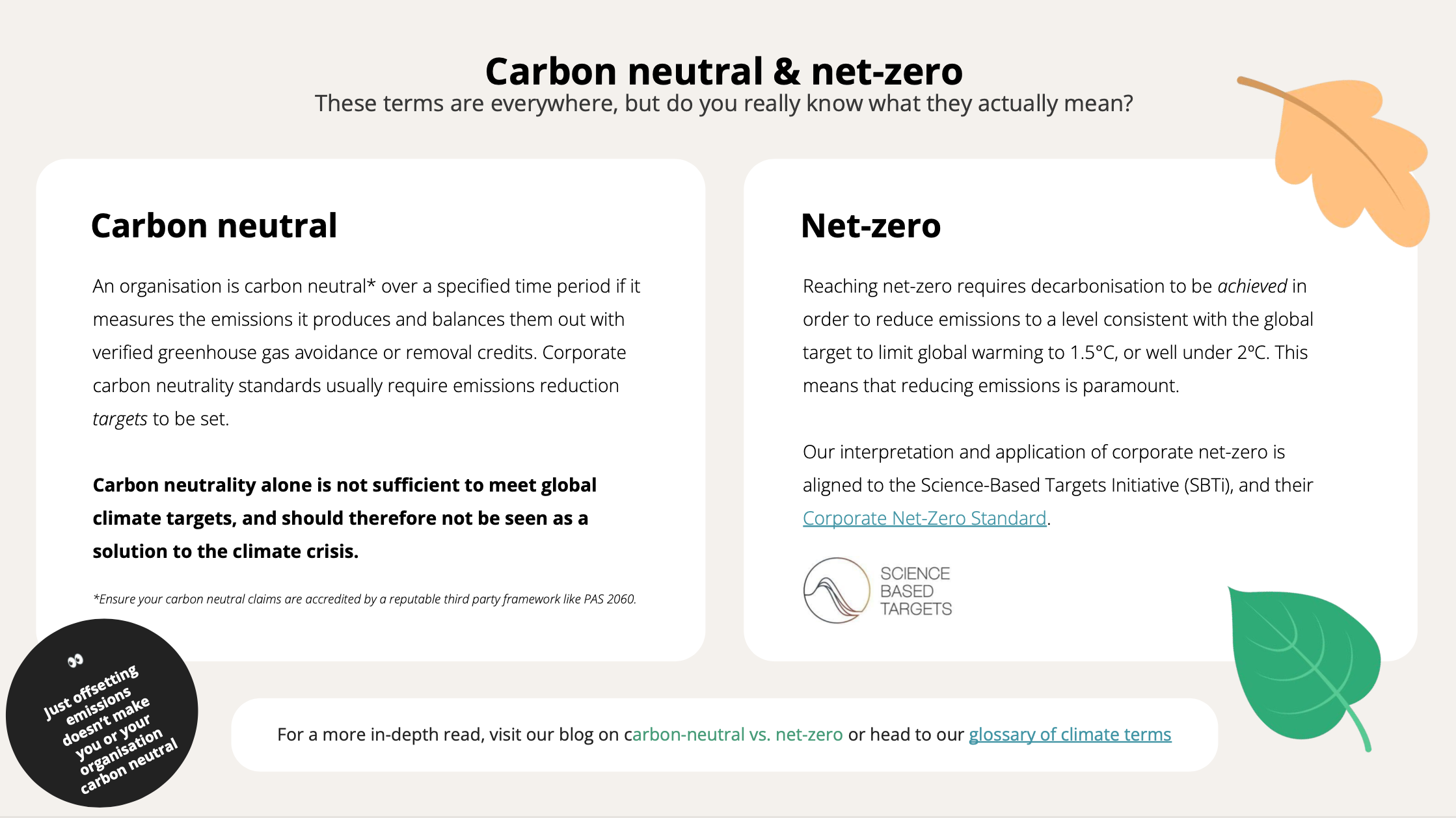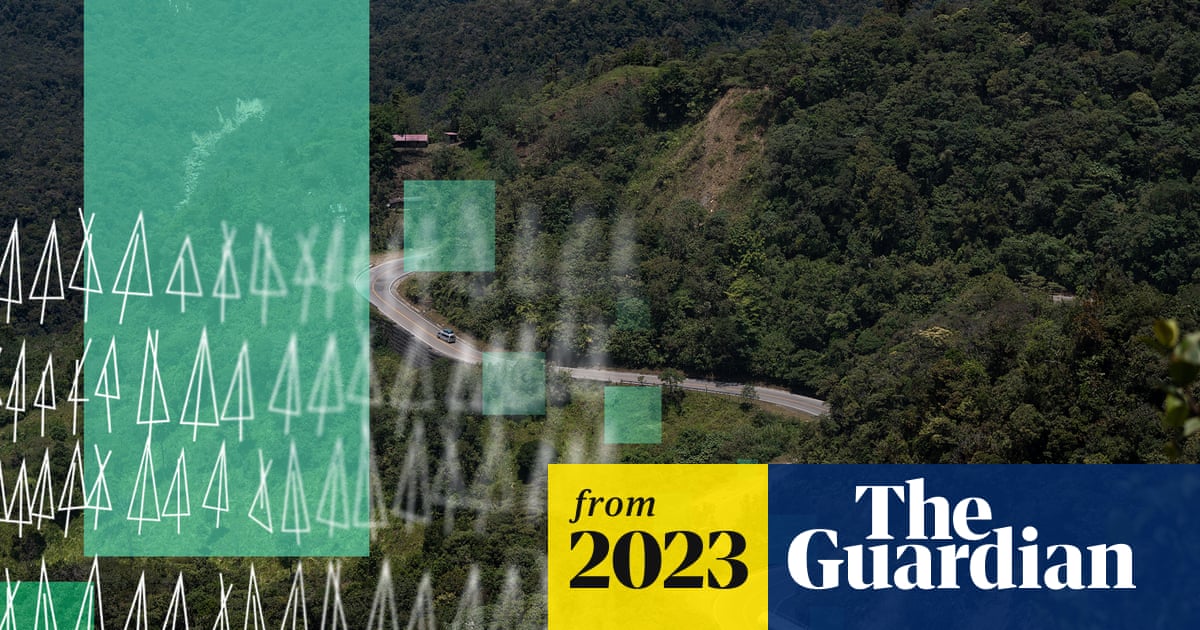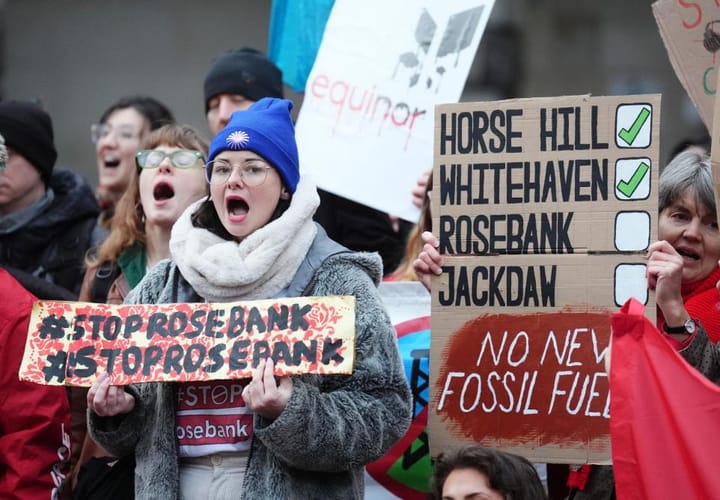Carbon Offsetting Isn't The Problem, "Carbon Neutrality" Is
Carbon offsetting often sparks heated debatesbut the issue is not with carbon offsetting, but with the flawed concept of carbon neutrality.

Carbon offsetting often sparks heated debates. The amount of outright fraud and greenwashing involved in this space is horrendous, but some critics will argue that the entire concept is a "scam", worse than doing nothing. I believe this specific viewpoint to be deranged. The issue isn’t with carbon offsetting itself, the problem is entirely with the goals of how it's implemented within a business, specifically the concept of "carbon neutrality."
Understanding Carbon Neutrality
Being "Carbon neutral" essentially means balancing out emissions by funding projects that reduce or remove carbon dioxide in the atmosphere. This approach allows businesses to continue with their usual operations while offsetting their emissions through various initiatives, such as tree planting, building biodigesters in rural Thailand, setting up solar farms in India, or funding other energy-efficient technologies to displace fossil fuel usage.
The problem here is that it doesn’t incentivize actual reductions in emissions. It’s a free pass for a business to maintain the polluting status quo without any sort of meaningful change to their practices.
Without drastic reductions in carbon emissions there can't be any sort of resolution to the climate crisis, and there isn't enough reforestation or rocket stoves in the world to offset the global emissions at their current rate. What we need is rapid reductions, and carbon offsets don't stop that or speed that up, but carbon neutrality definitively slows this down.
Why Net Zero is a Better Goal
Net Zero is a more ambitious and effective approach. It involves setting a target to minimize emissions as much as possible, with clear, aggressive milestones. The idea is to reduce emissions by a significant percentage each year and only offset what cannot be reduced. This strategy pushes for substantial and continual reductions, leading to a more sustainable impact.
These terms can be a bit squishy and mean various things around the world, but I am using the term "net zero" as defined in SBT’s Corporate Net Zero Strategy.

Here is a direct comparison from the folks at Ecologi.

This is the pathway to getting genuine reductions in emissions around the world.
The Time for Carbon Neutrality Has Passed
While carbon neutrality might have been a reasonable first step, it’s not enough anymore, and we need to step up our game. Paying for the damage you did seemed ok at first, but now you need to pay to reduce the damage, which when done properly can save money in the long term as well as make your products more popular as people increasingly grown more concerned about the death and destruction happening around them.
Businesses that care about the environment or have B-Corp certification should focus on developing and implementing Net Zero plans. Without a genuine commitment to reducing emissions, claims of being carbon neutral are at best misleading, at worst a flat out lie.
At this point, in 2024, if a company claims to be carbon neutral without a Net Zero plan, consumers should consider them to be greenwashing, and avoid giving them any money. Instead we need to support businesses that genuinely work towards reducing their carbon footprint and have clear, transparent, credible Net Zero strategies advertised prominently on their website, regularly updating them with progress being made towards their annual targets.
For example, I would challenge The Green Web Foundation's "Green Web Directory" listing web hosting providers with carbon offsetting used to power their claim of being green. That is no longer good enough. If they aren't working to massively reduce their carbon footprint along Paris-accord compatible net-zero timelines they are not green in any meaningful way. It's just vibes. Give them a rating and if its literally just carbon neutrality then those companies get a F, or at least a D-.
How could a hosting company genuinely reduce their carbon footprint other than being plugged in directly a solar/wind farm? It's not impossible but it requires understanding of the circular economy.
For example, data centers are being located in basements of buildings where the waste heat is used to heat water and air in those buildings. This can be upgraded to work on district heating networks to help power whole neighborhoods, turning waste heat into a useful product that displaces fossil fuels.
This, and other circular economic concepts, can be used to displace all of the "we just bought a few credits which may or may not be valid" thinking as a new metric for being "green".
Europe Bans "Carbon Neutral" Labeling
The carbon neutral problem is so well known that the European Union has created new legislation restricting the use of "carbon neutral" or "green" in products when all they are doing is buying some carbon credits.

Companies will no longer be allowed to make claims based on "emissions offsetting schemes that a product has neutral, reduced or positive impact on the environment." This is huge, and will force more companies to start actually working on reductions, but guess what? Carbon offsetting will continue to be involved, as companies offset their remaining footprint on their way to "as close to zero as possible".
Improve Carbon Offsetting Practices
Instead of dismissing carbon offsetting as purely a scam, we need to focus on improving the system. This means cracking down on fraudulent projects, enforcing stricter regulations, and ensuring companies who have bought cheap and fraudulent offsets are held accountable and required to purchase high-quality offsets from verifiable sources.
The funding from legitimate offsetting projects is crucial and can support initiatives that literally would not exist otherwise. For example, much of the land the Wildlife Trust buys is being made possible by Aviva providing funding for land in return for the carbon credits. We need these projects to happen, and the taxpayer cannot front the bill. The polluter pays is a key principle which we need to use but we absolutely must make sure the polluters are reducing their pollution too.
My charity Protect Earth has never sold a carbon credit, despite planting 100,000 trees and buying 140 acres of land, but in the future we may have to. When we do, I promise to only sell them to companies directly who have clear transparent net zero targets, and never selling anything to anyone fobbing us off with carbon neutrality. Doing this will help us scale our charity, hire more staff, and buy more land, and sticking to that policy will help me know that we are not enabling greenwashing through our work.
Avoidance vs. Removal Credits
There’s a significant difference between avoidance and removal credits, with avoidance being inherently flawed. Avoidance credits are generated by projects that prevent potential emissions, such as deforestation prevention. However, these projects can be massively questionable and fraught with scams. For instance, some schemes involve buying woodland, claiming it could be cut down, and selling credits on that basis.

This approach can be a scam because it doesn't guarantee actual emission reductions—just a license for companies to pollute more. In contrast, removal credits involve projects that physically remove carbon from the atmosphere, such as reforestation. Woodlands sequester carbon dioxide from the atmosphere and store it in the wood and in the soil. This can be accurately measured with soil sampling and measuring tree growth, which shows real world reductions in carbon emissions because you know how much carbon is sequestered there now which was not there before.
Peat bog restoration and advanced weathering have equally measurable benefits, and can have huge improvements to biodiversity when projects are done appropriately with a balanced approach instead of trying to "game carbon", which is why my charity is focused on habitat restoration with carbon sequestration purely being a side benefit.
Summary
The problem isn’t carbon offsetting itself, but the outdated and insufficient concept of carbon neutrality. Moving towards Net Zero is the way forward. By reducing emissions as much as possible and responsibly offsetting the remainder, we can make a meaningful impact on the climate crisis. Let’s focus on reforming and regulating carbon offsetting to ensure it supports real, necessary projects and stop giving a free pass to those hiding behind "carbon neutral" exagerations.





Comments ()